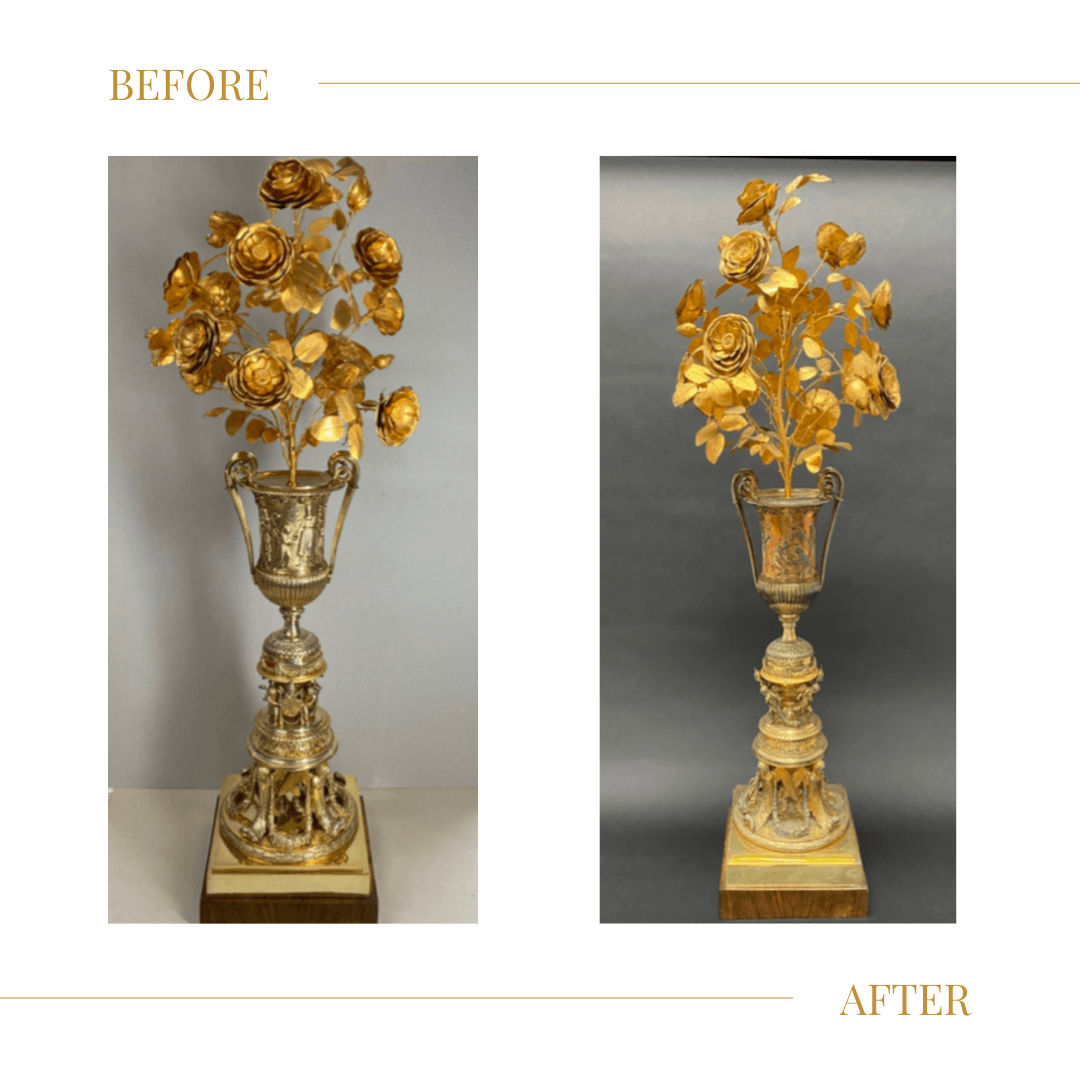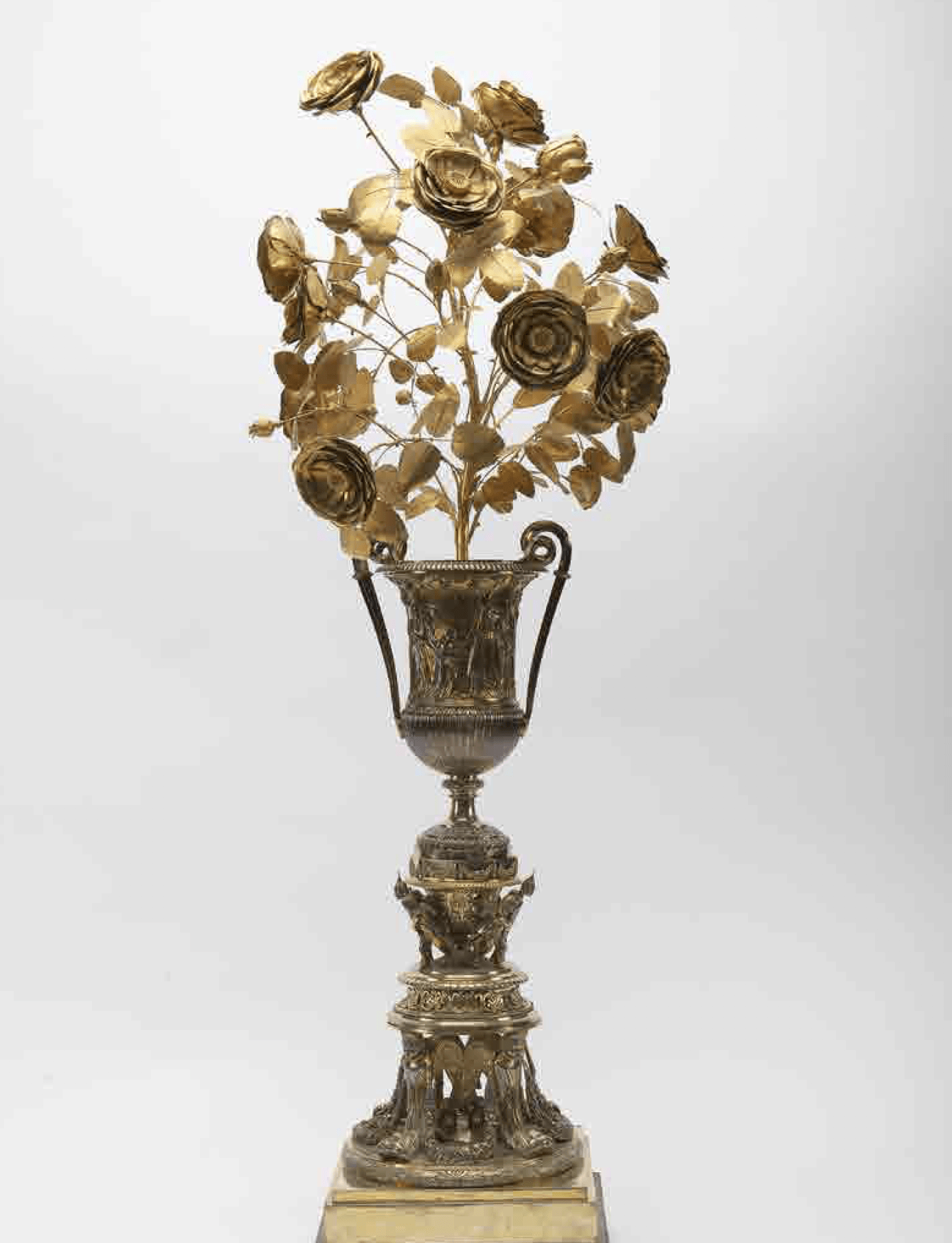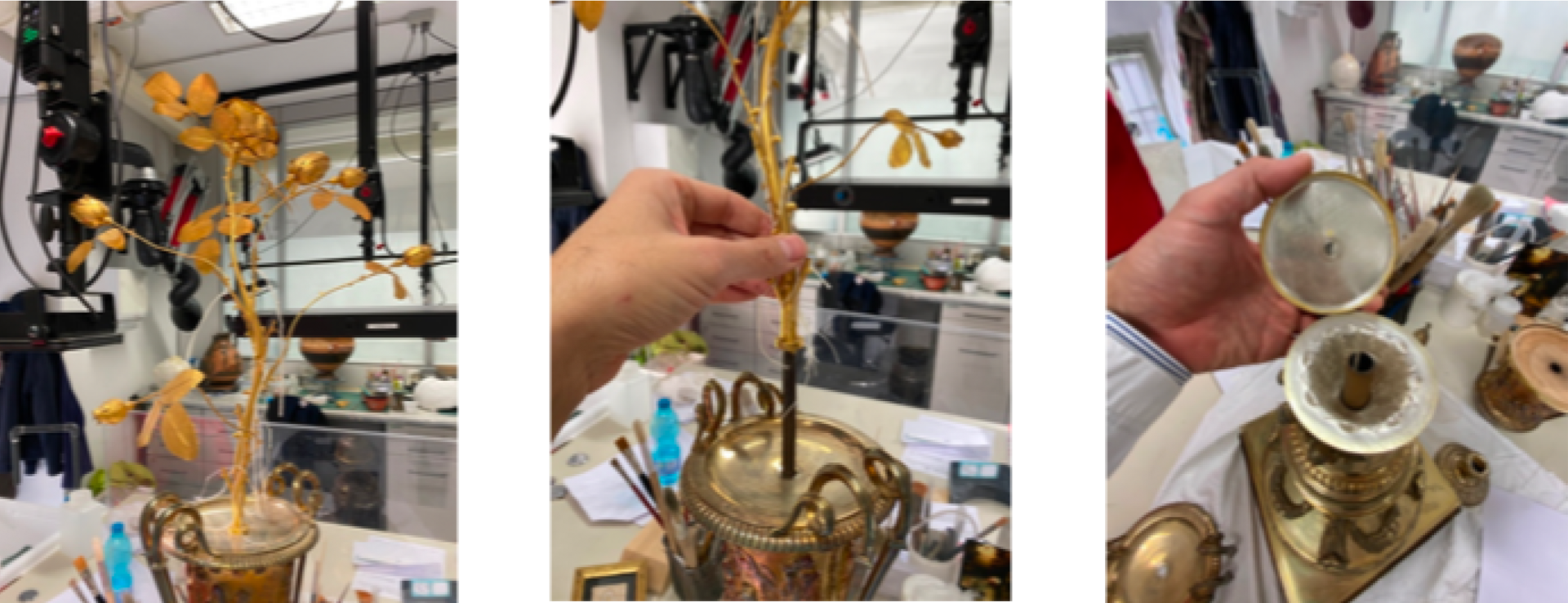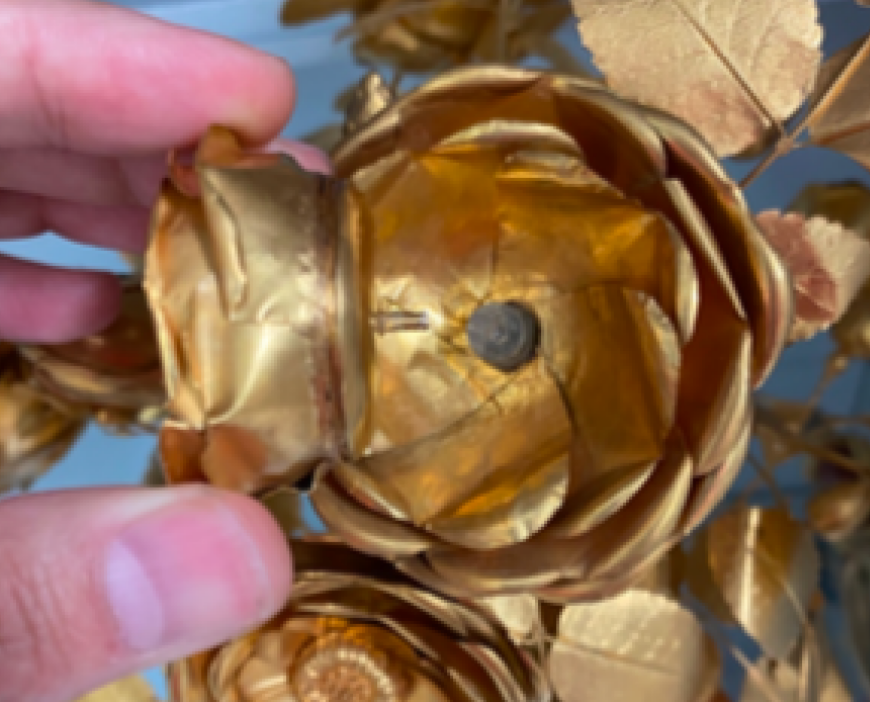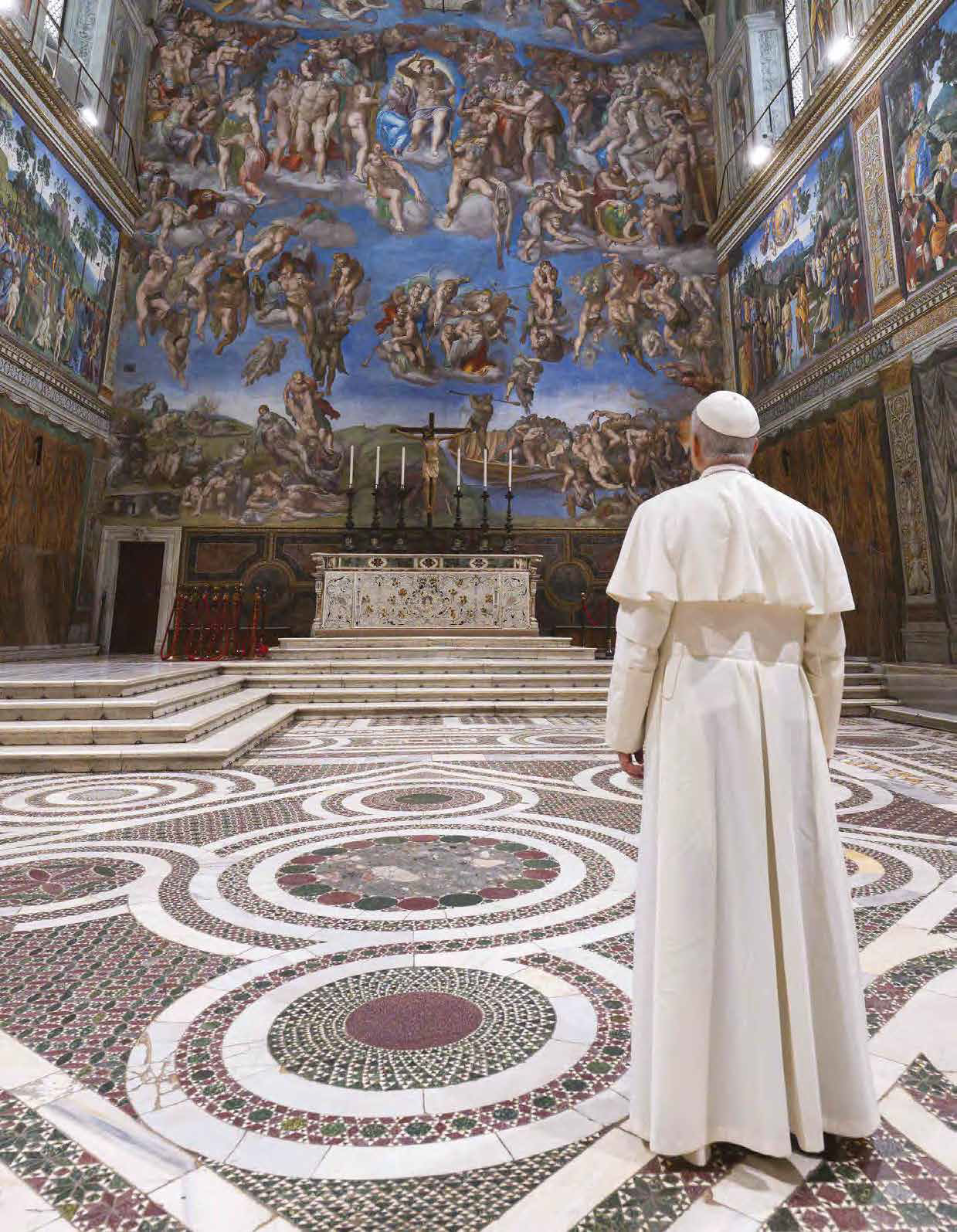Golden Rose Chalice Restoration
Dear Patrons and Friends,
As museum-goers, we often take for granted the artwork we admire when we walk through the halls of these unique institutions. We see it in its current state and assume that it always looked the same way, the way the artist intended. However, we must remember that artwork, like all of antiquity, is at the mercy of time: time brings exposure to light, moisture, dust, and other elements of nature that cause artwork to become dirty and often severely damaged. Our curators and restorers intervene in these moments thanks to your support. Today we see their results on a luminous golden rose chalice from the XIX Century, which is a restoration project that was adopted by Lorraine Dodero (Ohio Chapter).
Let’s see how the restorers returned the golden shine!
Golden Rose Chalice Restoration Report
The Golden Rose Chalice is a vase on a high pedestal that includes rich ornaments with reliefs representing the Birth of Christ and the Presentation in the Temple. It bears the coat of arms of Pius IX (1846-1878), the pope who had the ornament made and blessed. Giuseppe Salvi made this precious vase out of gilded silver in 1868-1870, and it contains a branch of golden roses. The origin of the Golden Rose is uncertain. At first, it was a single flower of pure gold tinted with red. Later, it was left untinted and set with gems (rubies, sapphires). From the XV century, Sixtus IV replaced the single flower with a branch bearing many leaves and flowers. The principal rose has a tiny cup with a perforated cover, which the Pope poured powdered musk and balsam into when he blessed it, annually, on the fourth Sunday in Lent (Laetare Sunday, also named Rose Sunday).
The state of preservation of the work was good overall. The work had dust and old protective agents from the past. There was metal oxidation on the parts made of gilded copper and silver. One of the critical points was the old gluing of the small shrine surmounted by the rose.
The goal of the restoration was to remove the dark patina that covered much of the work and remove the salts from the metal alloy.
City skyline
This goldsmith work (1868-1870) is an example of the high talent and tradition of the school of Giuseppe Salvi
This goldsmith work (1868-1870) is an example of the high talent and tradition of the school of Giuseppe Salvi
City skyline
This goldsmith work (1868-1870) is an example of the high talent and tradition of the school of Giuseppe Salvi
This goldsmith work (1868-1870) is an example of the high talent and tradition of the school of Giuseppe Salvi
After preliminary documentation of the artifact, the restorers moved on to the complete disassembly, beginning with the removal of the central pivot that supported the entire bundle ofroses. Each rose is an independent element, and the restorers needed to meticulously disassemble each piece, which was essential for reassembling the work at the end of the restoration. Of course, all the other constituent elements of the vase also had detailed mapping.
City skyline
Conservation state of the rose
Disassembly of all the elements
The wooden elements inserted inside and removed during disassembly were in good condition. Subsequently, restorers removed residues of old protective coatings and organic substances by using solvents. Restorers then used chelating products (Rochelle salts 30% in deionized water) to remove the soluble salts of the copper alloy and thoroughly rinsed all parts with demineralized water.
The story of the gift of the rose by the Supreme Pontiff is an old tradition dating back to 590, introduced by Pope Gregory and still in use today with Pope Francis in the form of a single rose. The tallest rose in the bundle has a small shrine for a scented balm that is still present today. The rose is the flower from the tree of Jesse. The scent symbolized the lily of the valleys, the flower of the field i.e. Christ. The rose is a tradition from the Fourth Sunday of Lent called Laetare. It brings joy and the fragrance of the Risen Christ to those who receive it.
The Small Shrine With The Rose Containing Fragrant Balm
